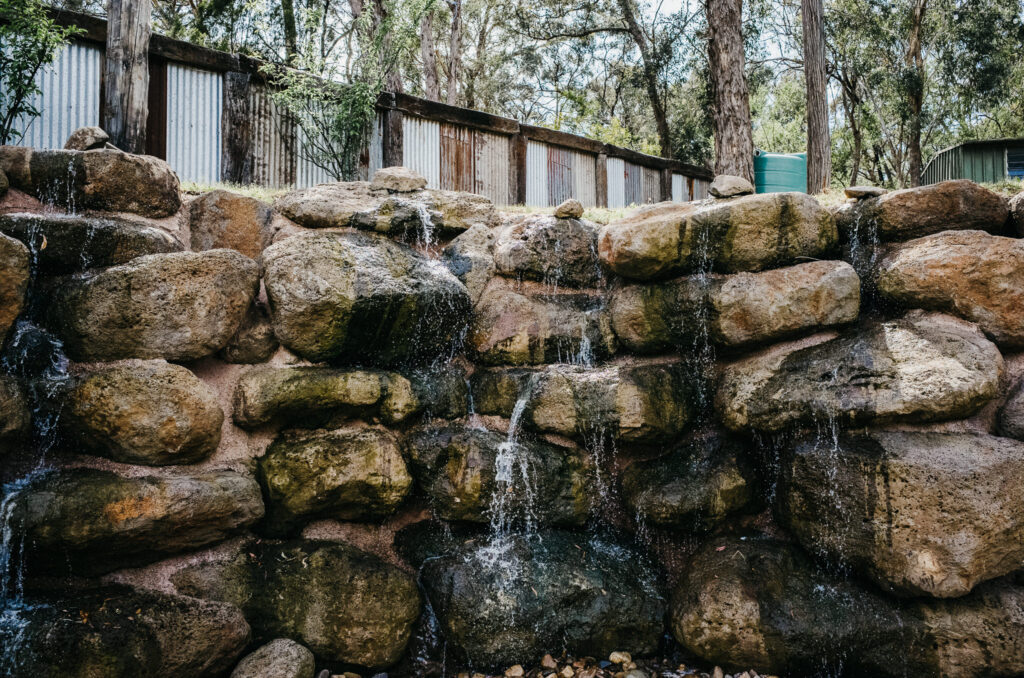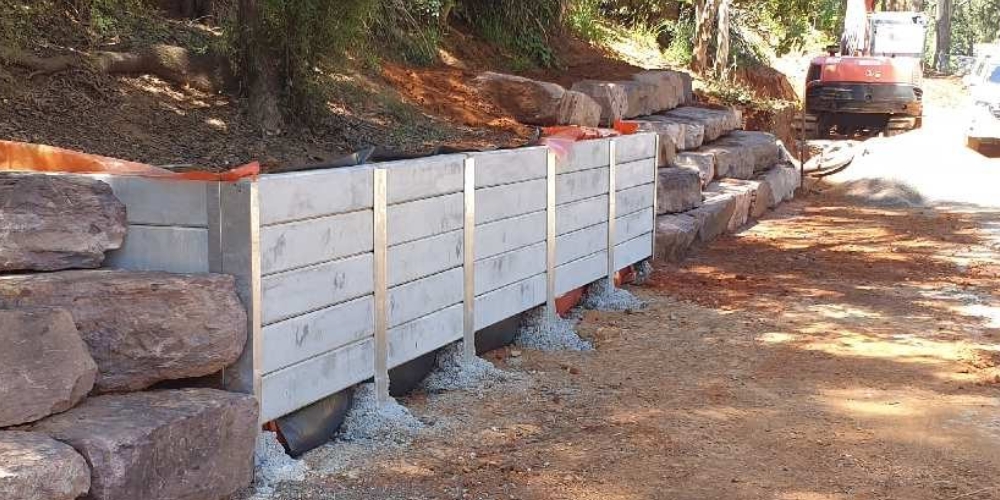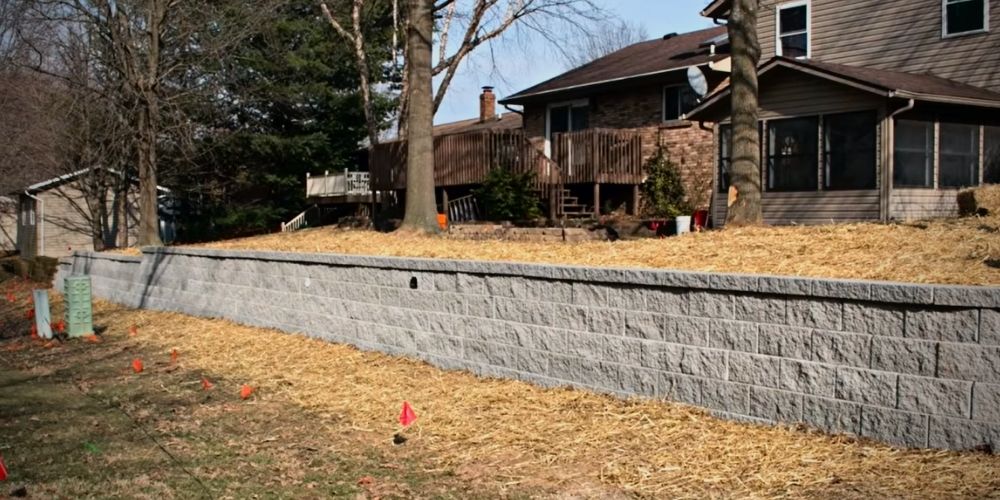Table of Contents
The History Of Rock Retaining Walls
Want to make your property look more valuable? A Rock retaining wall is an incredible option not just to beautify your property, but also to have that support. If you love the idea, it is very important to get yourself familiar with it first. Here’s a complete guide to rock retaining walls.
Ancient Egypt to Mesopotamia
Retaining walls is already a common practice way back in the ancient Egyptian era. They were used to battle the magnificent power of the Nile River that has caused immeasurable soil erosion and flooding. Retaining walls has helped divert the flow of water from the river into the fields and reservoirs. This also protected the homes within the path of the river.
Additionally, an ancient community in modern Ireland, Newgrange, Cairn also used retaining walls 5,000 years ago. Also in old Mesopotamia, there are pieces of evidence that show that they are using retention walls to create pyramid-like structures during those periods.
21st Century and Beyond
Even though modern times have seen its innovations when it comes to materials in building retaining walls, the reason why retaining walls is needed is still the same and that is to prevent soil erosion, divert water and create space. Retaining walls may come in various types, shapes, and sizes.
With the advancement of technology, taller retaining walls are often used as composite gravity walls. Through time, they are fashioned to be taller and more fashionable to meet the growing demands of different types of retaining walls instead of one system. Retention walls have become more varied, wherein there are now different variations and options available in the market.

What Is a Rock Retaining Wall?
This is a method of retaining a wall that uses boulders or rocks to create a barrier that can hold soil behind. Even though timber retaining or concrete block is also used for retaining walls method, the use of rock and boulder is a perfect choice if you want to achieve that natural and rustic look. Large boulders are even ideal if you want to have that more pleasing and functional retaining wall.
Aside from the aesthetic value of rock retaining walls, being extremely susceptible to weathering and durable to erosion and weathering makes them an incredible option. Additionally, rock retaining walls have an impeccable weight that can hold and keep the soil. To ensure that it doesn’t get washed away or collapsed due to erosion, proper construction is essential.
What are the Common Materials for Rock Retaining Walls
Porphyry rock
It is an igneous rock characterized by its porphyritic texture. It contains large crystals in a fine-grained groundmass. It is considered as the imperial stone of the Roman Empire. As compared to common granites, it is large and light-colored crystals of feldspar or quartz floating in purple or red fine crystals. Porphyry is widely quarried in many countries such as Mexico and Argentina. With impressive beauty and exceptional strength, it makes it a perfect material for rock retaining wall projects.
Bluestone
Bluestone is a commercial name for several building or dimension stone varieties. In Australia and New Zealand, basalt is the common name for bluestone rock retaining material. It is a fine-grained extrusive igneous rock that was formed from the rapid cooling of low-viscosity lava. With its unique appearance and durability, bluestone is an incredible material for rock retaining walls.
Bush Rock
Bush rock is one of the most popular materials for rock retaining and other landscape projects in the country. Since the early settlement of Europeans in Australia, bush rocks are already well-known materials for gardens and landscapes to create that impeccable and unique fences, line pools, and retaining walls. Bush rock is ideal also for creating magnificent waterfalls. They are also being used as a base for mosses, lichens, and orchids.
Sandstone
Sandstone is a sedimentary rock that is composed of sand-size grains of rock, organic or mineral materials. It has also been a popular building material way back in ancient times. It is soft, which makes it easy to carve. It is also used all over the work as great material for homes, temples, and other edifices. When it comes to retaining walls and fountains, sandstone is an incredible option to achieve that overall look.

What Are the Benefits of Rock Retaining Walls?
Many individuals prefer this method due to its several advantages that cannot be ignored. Everyone agrees that this is a good option just because of the fact that it adds value to the property, but there are great reasons why you need to select rock or boulder for any retaining walls project.
Can Control Erosion Effectively
One of the major qualities of rock retaining walls is they are very effective in controlling erosion. If the soil in the area is prone to erosion, then it is the best option to guarantee that it can be prevented. This is something that timber retaining walls can’t do, especially if they are poorly constructed. A well-constructed rock retaining walling can last for decades if properly installed.
Only Require Less Special Footings
As compared to other materials for retaining walls, it doesn’t require too much special footing to keep them effectively in tack.
Drains Well
The best thing about rock retaining is they have the capacity to drain efficiently. This means that they don’t have a problem with building water pressure behind the wall. It is a common problem if you use other types of materials for retaining walls.
Durable
Longevity and durability is definitely the main reason why it is one of the most popular choices when it comes to retaining wall jobs. Timber retaining walls can only last for a few years and you will need to replace them often. With rock retaining walls, its innate toughness says it all. You just need a proper installation to make sure that it can last for decades and beyond.
Ideal for Different Purposes
Rock retaining walls aren’t just purposely to prevent soil erosion. They are also very ideal for creating a beautiful garden bed. Many plant enthusiasts know how attractive wall rocks are in beautifying a property. In fact, there are lots of resorts all over the world that prefer using boulders and rocks to create awe-inspiring rock retaining walls. Not to mention, they are also perfect for a feature wall.
Competitively Priced
No matter what type of rocks or boulders that you are going to choose, the price of rock retaining wall materials is very competitive.
Do I Need a Council Approval for Building a Rock Retaining Wall?
When planning for a rock retaining wall project, keep in mind that you may need to seek the council’s approval according to different situations such as if it will reach 1 metre and if you are constructing it within an edifice or boundary of your property. You’ll have to get a council permit and may get a structural engineer’s help to make this project possible.
The main reason why you need to get permission and a professional engineer’s assistance is to make sure that it could not make an impact on the integrity of the structure as well as your neighbour’s property. Since the regulation may vary from one council to another, it is always a smart idea to check it with your local authority.
Here are some of the common council criteria for building a rock retaining wall:
- The maximum height of the wall is below 1 metre
- If it doesn’t redirect water from an adjoining property
- If the wall is at least 1 metre away from any registered main water or sewer
- If its 90 cm away from any property
As a rule of thumb, it is always best to inquire about your local council before commencing such a project. This can help you determine if you’ll need to get the right permit for your rock retaining wall.
How Does It Cost?
In any project, the cost plays a significant role in it. Generally, the cost for a rock retaining wall depends on different factors.
The Height and Scale Cost
Obviously, the higher and the wider your rock retaining walls are, the more expensive it is. If you are planning to build a wide one then expect that you will spend more on the materials. You’ll also need or spend more time to complete the project.
Rock Cost
Different rocks do have varied pricing and cost. This means that you will need to invest enough for you to get the right type of rock you need. In some cases if there are no available rocks or bricks available in your area, then you still have to find them in other places. Of course, you need to spend more in the event that you still need to import them. You will even spend more if the rock you prefer is the most expensive one.
Design Cost
The design of the rock retaining walls is also one of the considerations that you need to instill in mind when it comes to pricing. If you have an intricate design, it is sure that it will cost you more than the normal rock retaining task.

Excavation and Drainage Cost
If you want to have effective retaining walls, keep in mind that it will require effective excavation and drainage. You may need to rent excavation machinery to speed up the process too. Again, you will need to set a certain cost for this as well.
Labour Cost
Building the rock retaining walls yourself is fine as long as you have the skills and knowledge. If you don’t have the time and expertise, then it is always a good idea to hire experts who have the skills and equipment. You have to remember that not everyone has the skills in constructing or building a rock retaining wall, so it is always best to seek help from experts.
Hiring the Best Retaining Wall Builder
While it’s fine to go the DIY route, it is always the best idea to consult and seek help from the right professionals who know how to do it properly. Since there are various contractors out there, it is very significant to find the right builders who can make your dream into reality.
Are they Licensed or Qualified?
When hiring a stonemason, bricklayer, or builder, one important factor that you have to remember is their experience and track record. Do you think an amateur can handle this complex task? It is always best to hire an expert builder who has the license and qualification to complete the job.
Are they insured?
Proper insurance is also something that you need to look for a builder. You don’t want to be blamed and be accountable if something untoward incident happened during the procedure right? When the contractor has the right insurance guarantees that you are free from any liability.
How Long Will the Job Take?
You need to ask the contractor how long it will take for them to complete the job. It is essential if they can give you that estimate so that you will know what to expect in terms of the timeline of the task. Try to request for an estimate from a couple of contractors.
What About the Written Quote
Asking for a quote is one way to get the right information that you need regarding the contractor’s services. As much as possible, it is useful if you can get this information to see if they can provide you the service you need. Don’t forget to see the pricing as well as this can help you determine your budget for this project.
Reviews and Feedback
Aside from the right expertise and tools, it is also best to check if the contractor you are eyeing has a good reputation and track record. Make sure that they are approachable, friendly, and know-how to please every customer.
Conclusion
Rock retaining walls is an incredible option if you want your property to have an increased value. Just like any project, it requires enough planning since there are several aspects that you need to consider to guarantee that it will have a good result.
